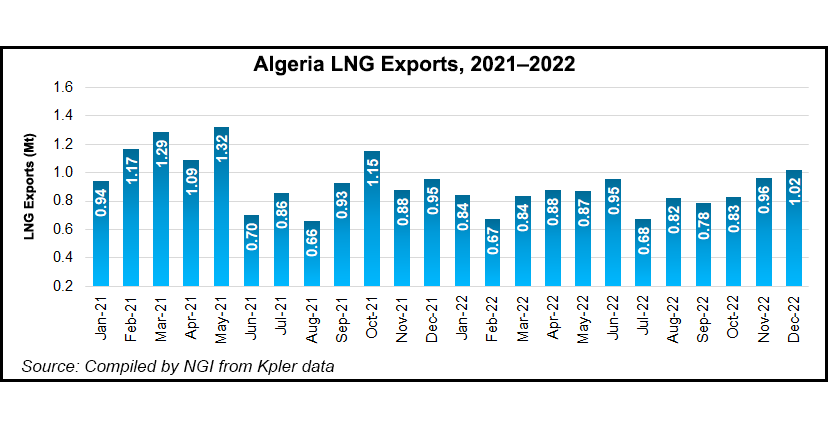International | Infrastructure | LNG | LNG Insight | NGI All News Access | Shale Daily
Algeria Makes Ambitious Plans to Nearly Double LNG, Pipeline Exports
© 2024 Natural Gas Intelligence. All rights reserved.
ISSN © 1532-1231 | ISSN © 2577-9877 | ISSN © 2158-8023 |



